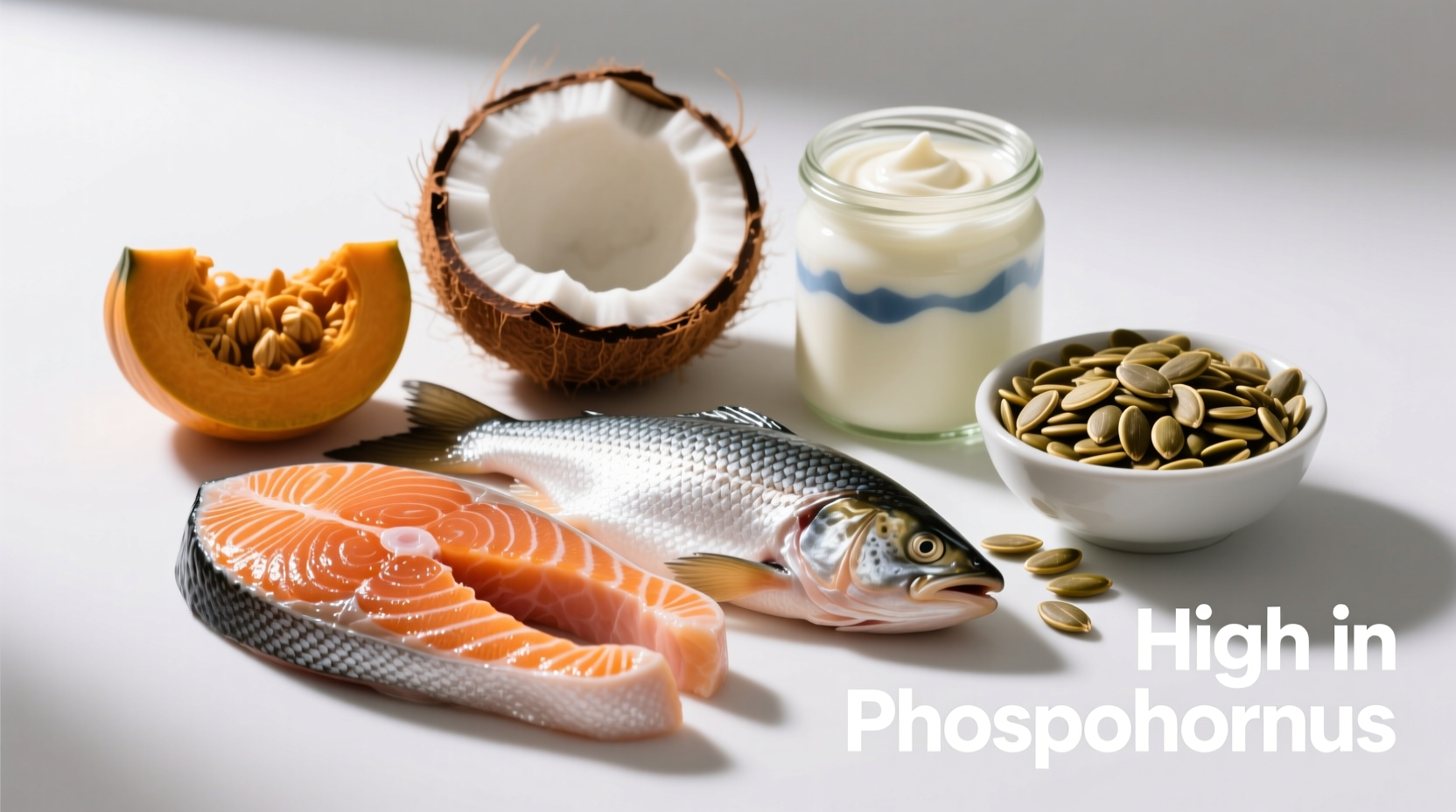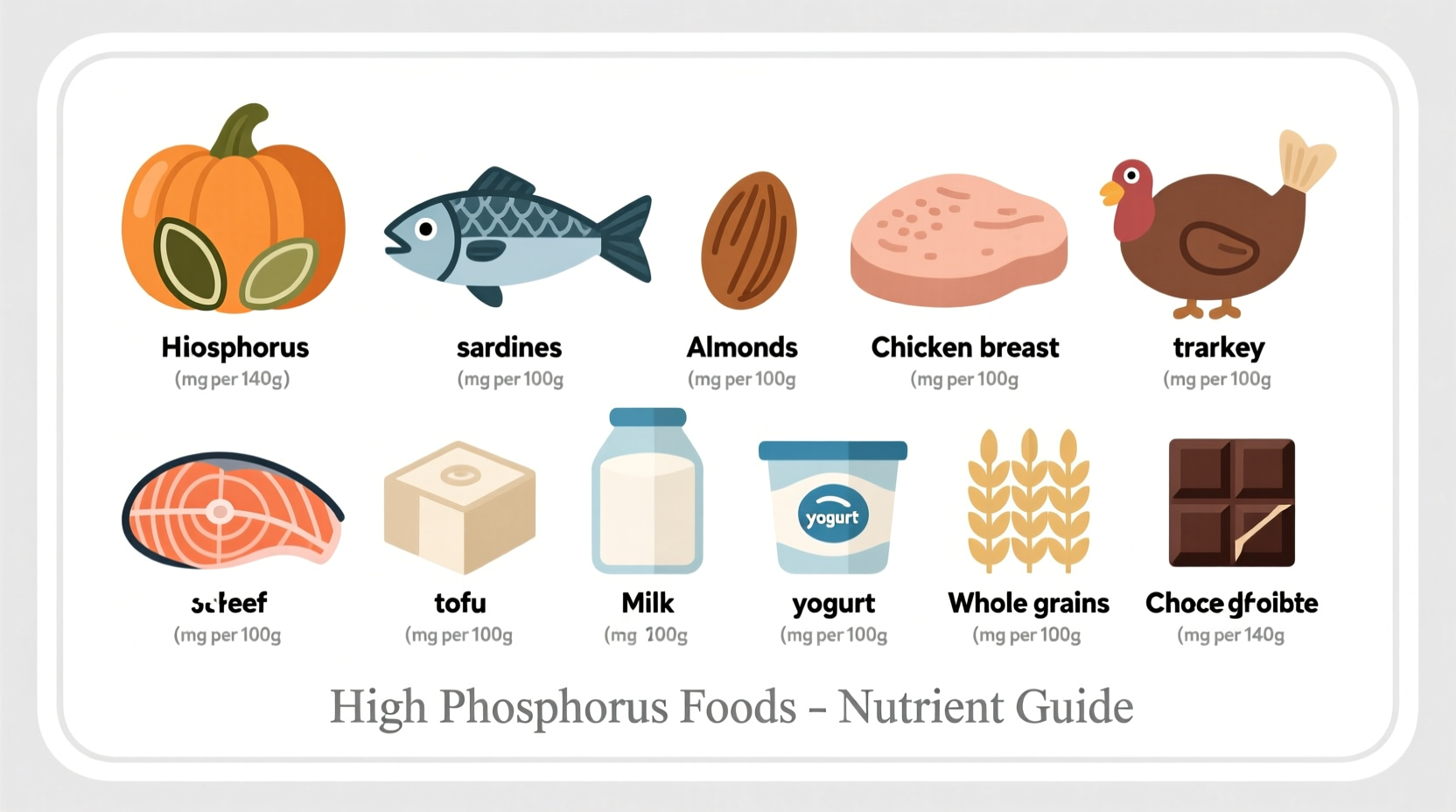Phosphorus plays a critical role in bone health, energy production, and cellular function. While most people easily meet their daily phosphorus needs through diet, understanding which foods contain the highest concentrations helps those managing kidney conditions or seeking optimal nutrition. The recommended daily allowance (RDA) for phosphorus is 700mg for adults, with higher needs during adolescence and pregnancy.
Why Phosphorus Content Matters for Different Diets
When evaluating what foods have high phosphorus, it's essential to distinguish between natural phosphorus sources and those with added phosphates. Natural phosphorus from whole foods has approximately 40-60% bioavailability, while additive phosphorus in processed foods reaches 90-100% absorption. This distinction proves crucial for individuals with chronic kidney disease who must carefully monitor phosphorus intake.
Natural High-Phosphorus Food Categories
Understanding the phosphorus content in meat versus plant sources helps tailor dietary choices. Here's how different food groups compare:
Dairy Products: Highest Bioavailable Phosphorus
Dairy consistently ranks among the top foods high in phosphorus for kidney disease management due to its balanced calcium-phosphorus ratio. A single cup of nonfat milk contains 230mg phosphorus (33% of RDA), while Greek yogurt (170g) provides 230-280mg. Cheese varieties range from 130mg (mozzarella) to 275mg (Parmesan) per ounce.
Animal Proteins: Complete Phosphorus Sources
Poultry and fish deliver substantial phosphorus alongside high-quality protein. A 3-ounce serving of chicken breast contains 230mg phosphorus, while salmon offers 250mg. Organ meats like liver provide exceptional concentrations - beef liver contains 475mg per 3-ounce serving. These represent some of the most bioavailable natural sources of phosphorus in food.
Plant-Based Phosphorus Options
For vegetarians and vegans, legumes and nuts provide significant phosphorus. Lentils (1 cup cooked) contain 175-180mg, while chickpeas offer 145-175mg. Pumpkin seeds stand out with 350mg per ounce. Whole grains like quinoa (215mg per cup) and oats (180mg per cup) also contribute meaningfully to daily intake. Note that plant-based phosphorus has lower bioavailability due to phytic acid content.
| Food Item | Serving Size | Phosphorus (mg) | % of RDA |
|---|---|---|---|
| Pumpkin seeds | 1 ounce (28g) | 350 | 50% |
| Salmon | 3 ounces (85g) | 250 | 36% |
| Nonfat milk | 1 cup (244g) | 230 | 33% |
| Chicken breast | 3 ounces (85g) | 230 | 33% |
| Black beans | 1 cup cooked (172g) | 240 | 34% |
| Whole wheat bread | 2 slices (56g) | 120 | 17% |
Contextual Considerations for Phosphorus Intake
Understanding daily recommended phosphorus intake by age reveals important variations. Infants require 100-275mg, children 400-1250mg depending on age, while adults need 700mg. Pregnant and lactating women maintain the standard 700mg requirement. Athletes may benefit from slightly higher intake due to increased cellular energy demands, though evidence remains limited.
The evolution of phosphorus recommendations demonstrates changing scientific understanding. According to the NIH Office of Dietary Supplements, early 20th century research focused primarily on bone health, while contemporary science recognizes phosphorus's role in ATP production, DNA synthesis, and pH regulation. Current guidelines emphasize monitoring additive phosphates in processed foods, which now appear in approximately 50% of supermarket products according to National Institutes of Health research.
Practical Guidance for Different Needs
For kidney health management: Those with chronic kidney disease should prioritize natural phosphorus sources over processed foods containing phosphate additives. The National Kidney Foundation recommends limiting intake to 800-1,000mg daily for stage 3-5 CKD patients. Focus on portion control with high-phosphorus foods rather than complete elimination.
For athletes and active individuals: While phosphorus rich foods for athletes support energy metabolism, supplementation rarely provides additional benefits. A balanced diet with adequate protein sources typically meets increased demands. Excessive phosphorus intake may actually interfere with calcium absorption, potentially affecting bone density over time.
For plant-based diets: Combine phosphorus-rich legumes with vitamin C sources to enhance mineral absorption. Soaking and sprouting beans reduces phytic acid content, increasing phosphorus bioavailability by up to 20% according to Journal of Food Composition and Analysis research.

Implementing Knowledge into Daily Eating
Creating balanced meals with appropriate phosphorus levels requires practical strategies. Start by incorporating one high-phosphorus protein source per meal - such as eggs for breakfast (90mg per large egg), tuna for lunch (130mg per 3 ounces), and chicken for dinner. Pair these with vegetables that provide complementary nutrients without excessive phosphorus.
When reading labels, watch for phosphate additives listed as "sodium phosphate," "calcium phosphate," or any ingredient containing "phos." These contribute significantly to daily intake without providing the additional nutrients found in whole food sources. For those monitoring intake, keeping a simple food diary for 3-5 days helps identify major phosphorus sources in your current diet.











 浙公网安备
33010002000092号
浙公网安备
33010002000092号 浙B2-20120091-4
浙B2-20120091-4